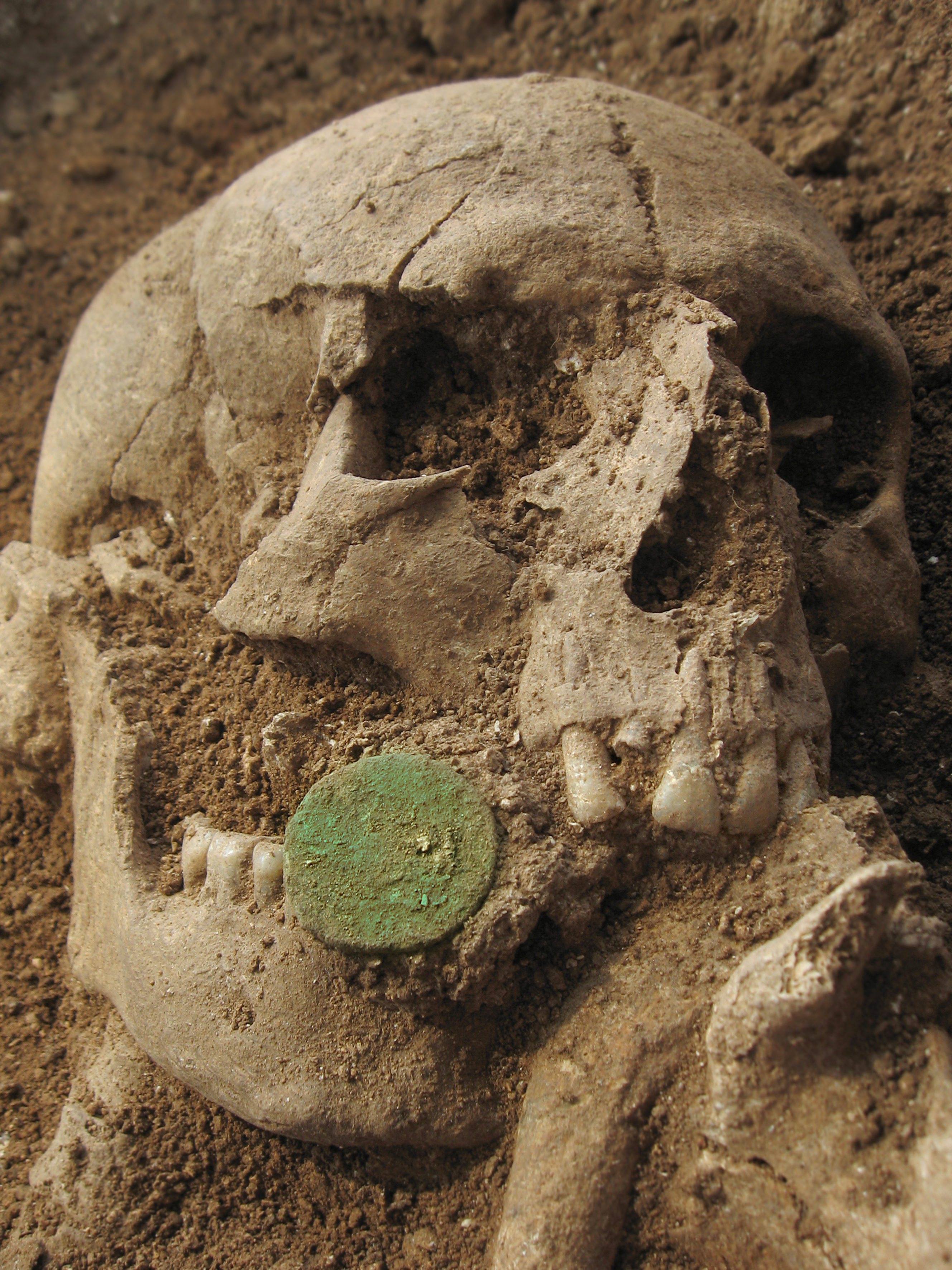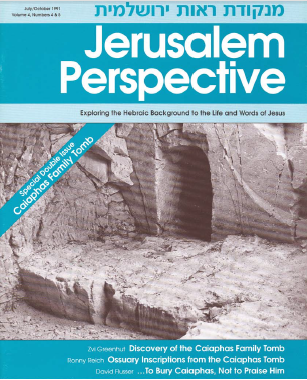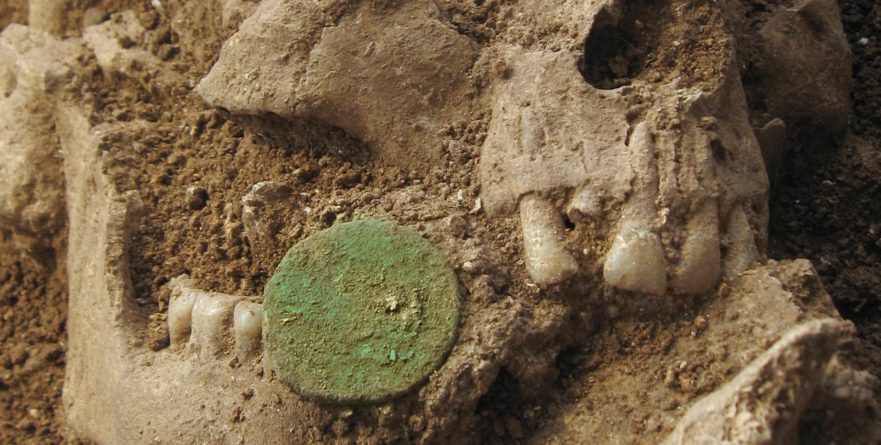This article originally appeared in the JP magazine as a sidebar attached to “Discovery of the Caiaphas Family Tomb” by Zvi Greenhut.
It is rather surprising that we find in a Sadducean tomb evidence of the pagan custom of supplying the dead with payment for entrance into the Underworld. The Sadducees strongly opposed the idea of the resurrection of the dead:
The Sadducees say that there is no resurrection, and that there are neither angels nor spirits, but the Pharisees acknowledge them all. (Acts 23:8)
The Sadducees hold that the soul perishes along with the body. (Josephus, Antiq. 18:16).

However, it may be that unofficially women were permitted to hold a few superstitions, and so a coin in the mouth of a female member of the family is less surprising than it would be if found in the mouth of a male. Alternatively, the coin could have been slipped into this woman’s mouth, without the knowledge of the family, by a Gentile slave who loved her mistress and feared for her safe journey across the River Styx.
The personal objects such as sandals that were found in coffin tombs at Jericho and Dura Europos, dating from mid-first century B.C. to about 10 A.D., were only in coffins of women and children.[1] Similarly, the coin discovered in the first-century A.D. Caiaphas tomb was found in a woman’s skull.
Shaul Lieberman claims that Jews placed personal belongings in tombs, not because the dead needed them but because the onlookers at the funeral found the practice poignant.[2]

- [1] R. Hachlili and A. Killebrew, “Jewish Funerary Customs during the Second Temple Period, in the Light of the Excavations at the Jericho Necropolis,” Palestine Exploration Quarterly 115 [1983]: 116. ↩
- [2] Saul Lieberman, “Some Aspects of Afterlife in Early Rabbinic Literature,” American Academy for Jewish Research, 1 [1965]: 509. ↩































































































